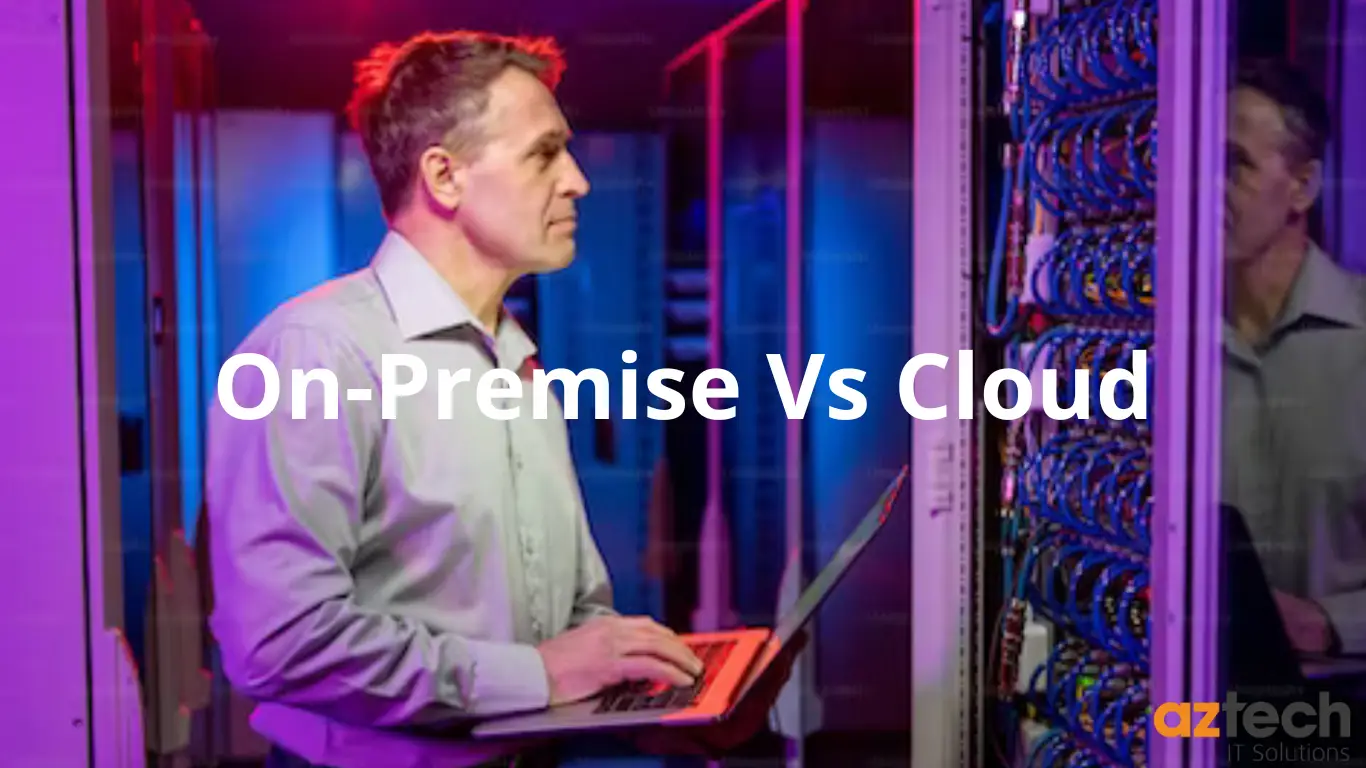In an ever-evolving technological landscape, cloud computing and on-premise infrastructure are becoming increasingly important for businesses to understand in order to support their goals.
But what’s the difference between these two systems?
How can companies weigh the benefits and risks of adopting one or both technologies?
In this blog post, we will guide you through a comprehensive analysis of On-Premise vs Cloud Computing, detailing the core differences between on-premise vs cloud types, as well as exploring which one is best for your business needs.
On Premise vs Cloud Computing: Defined
On Premise refers to software or applications installed locally on the client's own infrastructure, whereas Cloud Computing solutions allow users to access software or applications via the internet.
One major difference between on-premise vs cloud is the way data is stored.
This difference brings about changes in cost, scalability, flexibility, and security for businesses.
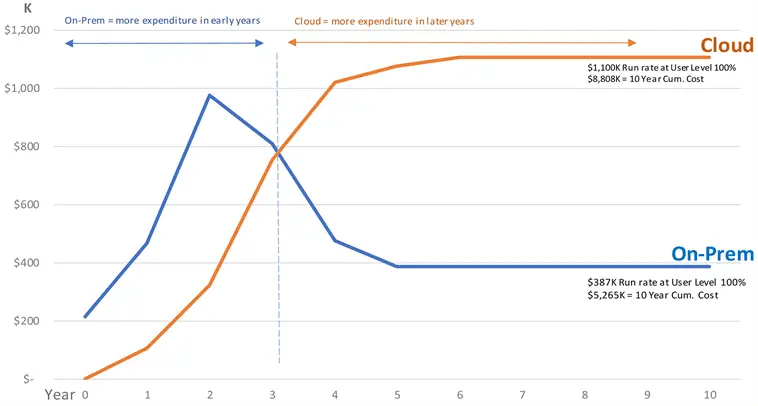
It's important to understand these two deployment models and choose the one that best suits your business needs.
Cloud Adoption Statistics
According to a study by O-Reilley, over 90% of organisations are utilising the cloud computing environment.
Interestingly, about two-thirds of respondents are currently operating in a public cloud, while 45% are using a private cloud.
This is in contrast to the 55% who still rely on traditionally managed on-premise software.
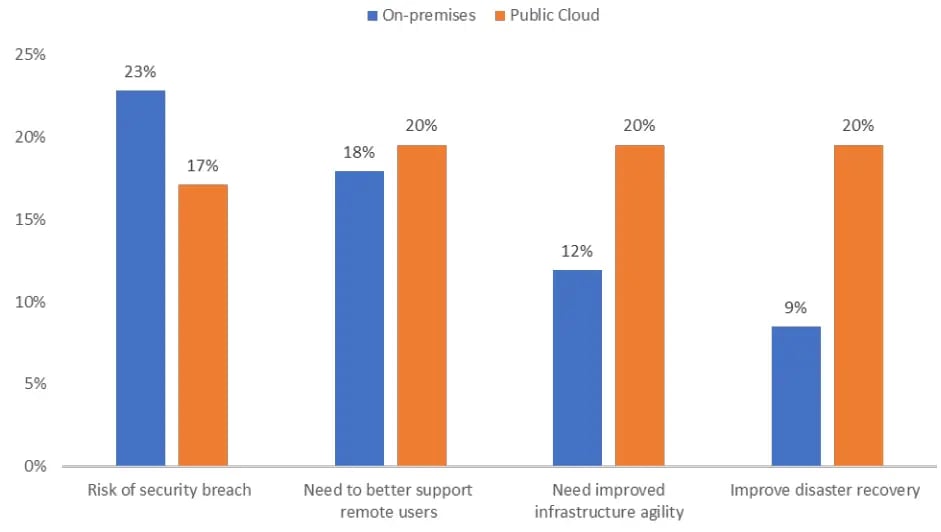
Looking ahead, approximately 48% of organisations plan to migrate at least half of their applications to the cloud within the next year.
Additionally, a significant 20% intend to move all their applications to the cloud computing environment.
In terms of strategic approach, 47% of organisations are pursuing a cloud infrastructure.
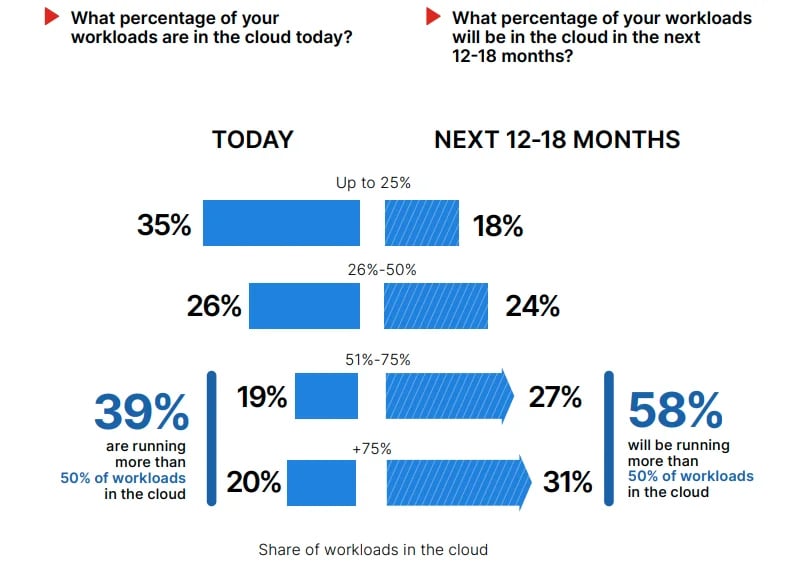
Meanwhile, 30% are already considered cloud software, while 37% aspire to become cloud-native within the next three years.
It's worth noting that only a mere 5% of businesses are planning to switch from the cloud infrastructure to on-premises infrastructure, a practice known as cloud repatriation.
What is On-Premise Data Centre?
An on-premise data centre refers to the physical location where an organisation stores and manages its data and IT infrastructure.
Unlike cloud environment, the on-premises are managed and maintained by the organisation's IT team, which has full control over its security and performance.
On-premise systems are typically used by large companies with a significant amount of data that requires high levels of security and accessibility.
This type of data centre allows businesses to maintain complete control over their on-premise infrastructure, offering greater flexibility and customisation options.
While there are some drawbacks of on-premise infrastructure, such as higher costs and a need for constant upkeep and updates, businesses continue to rely on them due to their reliability and security benefits.
What is Cloud Computing?
Cloud computing refers to the practice of storing and accessing data and programs over the internet instead of using an on-premise location.
This can range from using web-based email service to store important files on a remote server through computing resources like Dropbox or Google Drive.
The benefits of cloud computing can be immense, including greater accessibility, scalability, and cost-effectiveness.
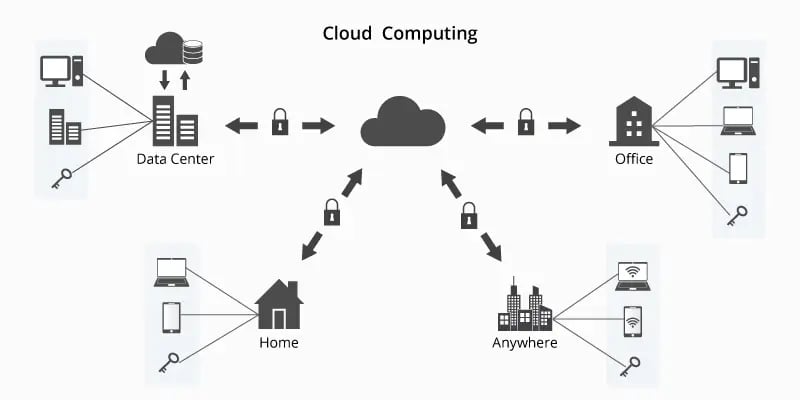
However, as with any technology, there are also potential drawbacks to consider. At its core, though, cloud computing services represent a shift towards a more connected, collaborative, and constantly evolving digital landscape.
Key Differences between On-Premise vs. Cloud
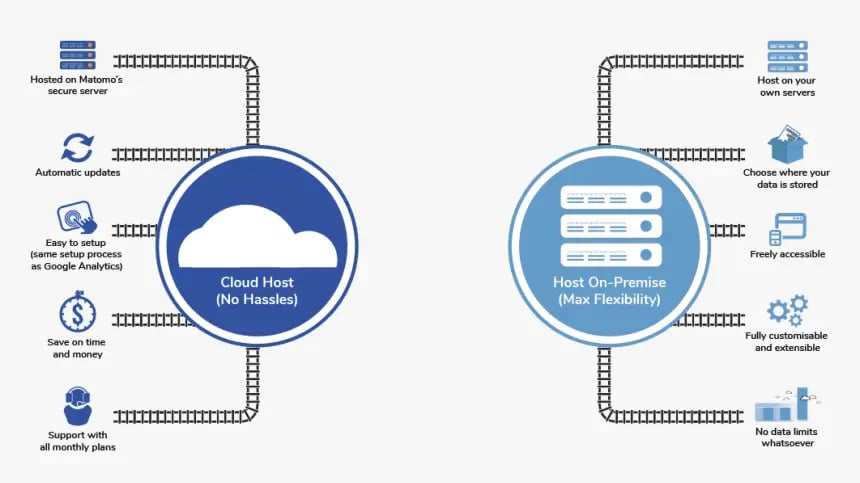
Here are the 6 major differences between on-premises and cloud computing services:
1. Cost
One of the main differences between on-premise vs cloud computing is cost. On-premise software requires up-front costs for server hardware, software, and maintenance, while cloud infrastructure is typically more cost-effective as they are billed on a pay-as-you-go basis.
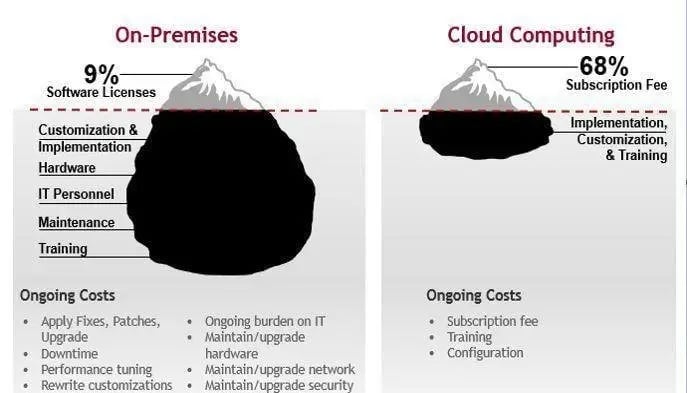
Additionally, cloud service provider often offers discounts for long-term contracts or usage-based billing which can help to reduce costs even further.
2. Scalability
The scalability of on-premises and cloud environment is also a key difference.
On-premise solutions require additional hardware and software purchases to scale up capacity, while cloud infrastructure can be scaled up or down in minutes with no additional hardware or software investments required.
This makes it much easier for businesses to quickly adjust their computing needs as their business grows or shrinks over time.
3. Security
Security is another major difference between on-premise vs cloud computing.
On-premise solutions rely on an organisation’s own security measures to protect all the data, while cloud service providers use state of the art security measures such as data and encryption keys and two factor authentication to protect sensitive data from unauthorised access.
Additionally, cloud service providers also have a dedicated team that monitor their systems 24/7 to detect any potential threats.
4. Availability
On-premise environments require organisations to maintain their own IT infrastructure which can be difficult if there is an unexpected power outage or other issue that affects availability.
Cloud infrastructure, however, is hosted in a secure data centre with multiple redundant systems in place which ensures that applications remain available even during unplanned outages or other disruptions.
This makes it much easier for businesses to ensure high levels of availability for their customers without having to invest heavily in maintaining their own IT infrastructure.
5. Flexibility
Cloud computing services also provide businesses with greater flexibility than on premises solutions, as it allows them to quickly deploy new applications and services without having to purchase additional hardware or software licenses upfront.
This makes it much easier for businesses to experiment with new technologies and services without having to make large investments upfront which can help them stay ahead of the competition in today’s rapidly changing marketplaces.
6. Maintenance
Organisations using on premise solutions must maintain their own IT infrastructure which requires regular maintenance such as patching servers and updating software versions.
This core business strategy can be time consuming and costly if done incorrectly or not done at all due to lack of in-house resources or expertise within the organisation.
Cloud service providers manage all aspects of maintenance, so businesses don’t have worry about these tasks allowing them focus more on growing their business instead of managing IT infrastructure.
Key Differences between On-Premise vs. Public Cloud vs. Private Cloud
Cost
One of the key differences between on-premises, private, and public cloud is cost.
On-Premise tends to have higher upfront costs associated with them since they require purchasing servers, storage systems, or other hardware along with software licenses.
Private cloud software tends to be more expensive than public cloud computing models because they require dedicated resources which increases costs significantly.
Public cloud environment offers cost savings, since companies don't need large upfront investments since resources are shared across multiple customers reducing overall costs.
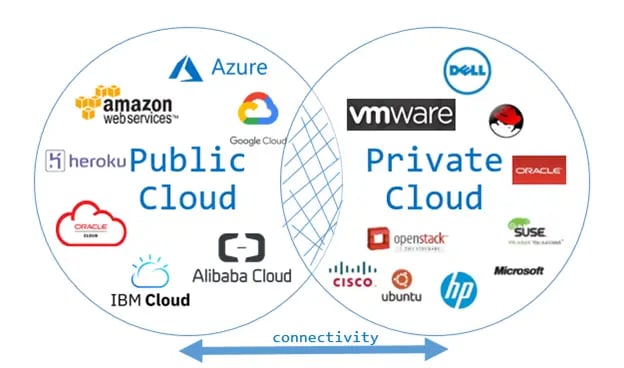
Security
Security is one of the key differences between on-premise, private, and public cloud solutions.
On-premises offer greater control over data security due to their dedicated infrastructure; however, they often lack features such as encryption or multi-factor authentication that can be found in private or public cloud solutions.
Private clouds also provide additional security features such as improved identity management capabilities; however, they can be more expensive than public clouds due to their dedicated infrastructure requirements.
Public cloud services offer less control over data security due to their shared environment; however, many providers offer advanced security features such as encryption and multi-factor authentication for added protection against unauthorised access or malicious attacks.
Scalability
Scalability is another key difference between on-premise, private, and public cloud solutions.
On-premise solutions often require significant upfront investments in hardware before they can scale up operations; however once acquired these investments can be leveraged for future growth without additional costs associated with scaling up operations quickly or efficiently.
Private cloud services provide better scalability options than on premise but still require significant investments in hardware before they can scale up operations quickly or efficiently.
Public Cloud computing provides the best scalability options out of the three models since they leverage shared resources, which allows companies to scale up quickly without any upfront investments in hardware or software licenses.
Performance
The performance of on-premise, private, and public cloud solutions also varies greatly.
On-premise solutions offer the best performance as they are hosted on dedicated hardware that can be optimised for specific workloads.
Private clouds offer good performance but may not be able to scale to meet changing demands, due to limited resources available to the organisation.
Public clouds offer good performance but may suffer from latency issues due to shared infrastructure and unpredictable traffic patterns from other customers using the same services.
Flexibility
On-premise solutions are not very flexible since changes can only be made through manual updates or upgrades to existing hardware or software components.
Private cloud services offer greater flexibility than on-premise solutions since changes can be made quickly without having to purchase additional hardware or software components.
Public cloud systems offer the greatest flexibility since changes can be made almost instantly without any additional investments in hardware or software components required by the organisation.
Availability
The availability of on-premise, private cloud, and public cloud solutions also vary greatly depending on each particular implementation.
On-premises typically have high availability due to dedicated resources available for maintenance purposes; however, if an outage occurs it will take longer for services to be restored, compared with other types of solutions, due to manual intervention required for recovery processes such as restoring servers from backups or rebuilding failed components from scratch if no backups exist at all.
Private clouds have good availability but may suffer from resource contention issues due to limited resources available for maintenance purposes.
Public clouds have excellent availability due to automated recovery processes built into their architectures which allow them to recover quickly from outages with minimal manual intervention required by users or administrators alike.
Key Differences of hybrid cloud vs on-premise
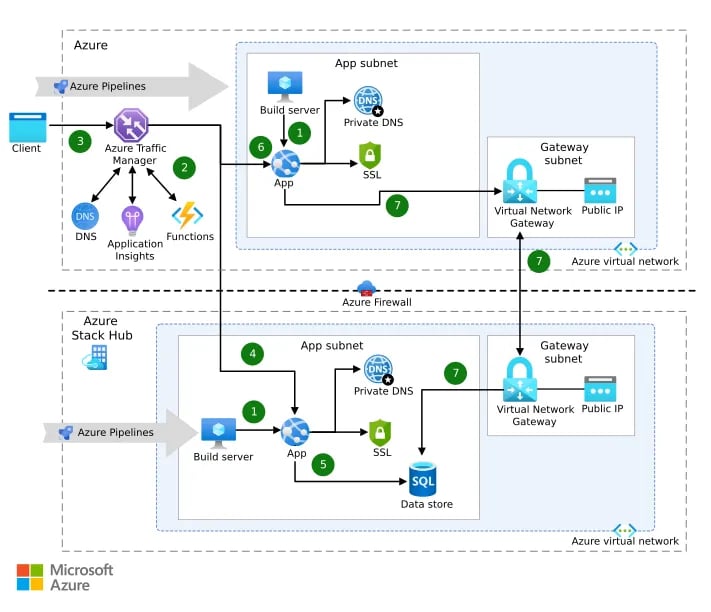
Cost
One of the key differences between hybrid cloud vs on premise is cost.
A hybrid cloud solution typically requires an upfront investment in hardware and software, but it can be more cost-effective in the long run as it allows for scalability and flexibility.
On-premise solutions, on the other hand, require a larger upfront investment in hardware and software but may be more cost-effective in the short term.
Security
When considering hybrid cloud vs on premise infrastructure, security is also an important factor to consider.
Hybrid cloud solutions are often more secure than on-premise solutions due to their distributed nature, which makes them less vulnerable to attack or data loss.
On-premises software, however, can be more secure if they are properly managed and monitored by IT professionals.
Scalability
Hybrid cloud infrastructure offers greater scalability than on-premise solutions because they allow for the addition of resources as needed without having to purchase additional hardware or software licenses.
On-premise solutions may require significant changes to existing infrastructure when scaling up or down, which can lead to additional costs and delays in deployment times.
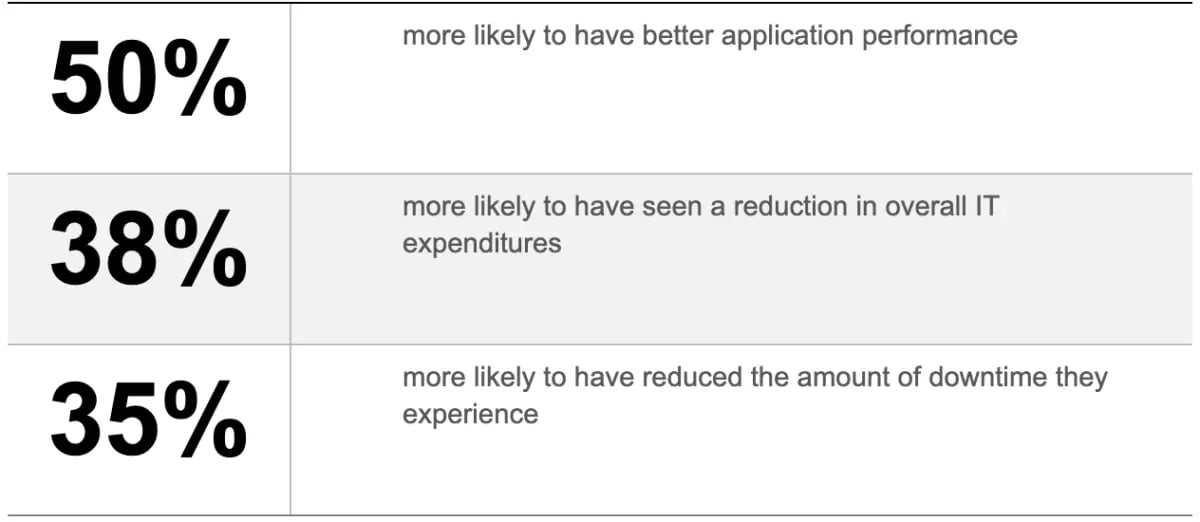
Reliability
The reliability of hybrid cloud infrastructure vs on premise solutions depends largely on the provider that is used.
Hybrid cloud computing is typically more reliable than an on-premise environment because they are hosted by a third-party service provider who takes responsibility for maintenance and uptime guarantees.
On-premise solutions may be less reliable if not properly maintained by IT personnel or if there are any issues with the hardware or software being used.
Flexibility
Finally, when comparing hybrid cloud to on premise infrastructure, flexibility is also an important factor to consider.
Hybrid cloud software offers greater flexibility as they can easily be scaled up or down depending on current needs without requiring significant changes to existing infrastructure or purchasing additional hardware or software licenses.
On-premise systems may be less flexible as they require significant changes to existing infrastructure when scaling up or down and additional investments in hardware and software licenses may be required.
On premise vs Cloud: Which option is the right fit for your business?
On-premise infrastructure has been the norm for years and has allowed businesses to have full control over their systems.
However, as technology advances in 2023, cloud infrastructure is becoming increasingly popular, offering businesses unparalleled flexibility and scalability.
With cloud computing, businesses can reduce costs as they only pay for what they use, and they can access their systems and software applications from anywhere in the world.
But which option is the right fit for your business? It depends on your specific needs and priorities as a business.
Both solutions have their advantages and disadvantages, so be sure to do your research and choose the option that best aligns with your business goals before cloud migration.
On premise vs cloud: FAQs
Which is better, cloud or on-premise?
The question of whether on-premise or cloud computing is better ultimately depends on the specific needs and requirements of the business in question. Factors such as budget, the size of the business, and the desired level of customisation and control must be taken into consideration.
What is the difference between a cloud and on-prem decision?
On premise software is installed directly onto your company's servers and is accessed via the in-house network. In contrast, cloud-based solutions store data and programs remotely in offsite cloud servers which can be accessed from anywhere with an internet connection.
What is the difference between on-premise and private cloud?
The main difference between the two is that on-premise is a physical solution, whereas private cloud is a virtual one.
What is the difference between cloud and on-premise energy?
On-premise energy software is installed directly onto a company's servers and managed by their IT department. In contrast, cloud-based energy software is hosted on a provider's servers, and users can access it through a web browser. The primary difference between the two is the location of the software and who manages it.
Which is better on-premise or cloud?
Both approaches have their advantages and disadvantages, and ultimately, the choice depends on a company's unique needs. It is important to carefully consider the costs, security, and scalability of each option.
What is the difference between on-premise and off premise cloud?
The key difference between the two is the level of control the organisation has over the infrastructure and data. While on-premises allow for more customisability and security, off-premise offers scalability, flexibility, and cost-effectiveness.

-1.png?width=552&height=678&name=text-image%20module%20desktop%20(4)-1.png)


.png?width=2000&name=Case%20study%20(21).png)


-2.png?width=422&height=591&name=text%20image%20tablet%20(31)-2.png)

-2.png?width=1366&height=768&name=Blog%20Hero%20Banners%20(4)-2.png)
-2.png?width=1366&height=768&name=Blog%20Hero%20Banners%20(5)-2.png)
